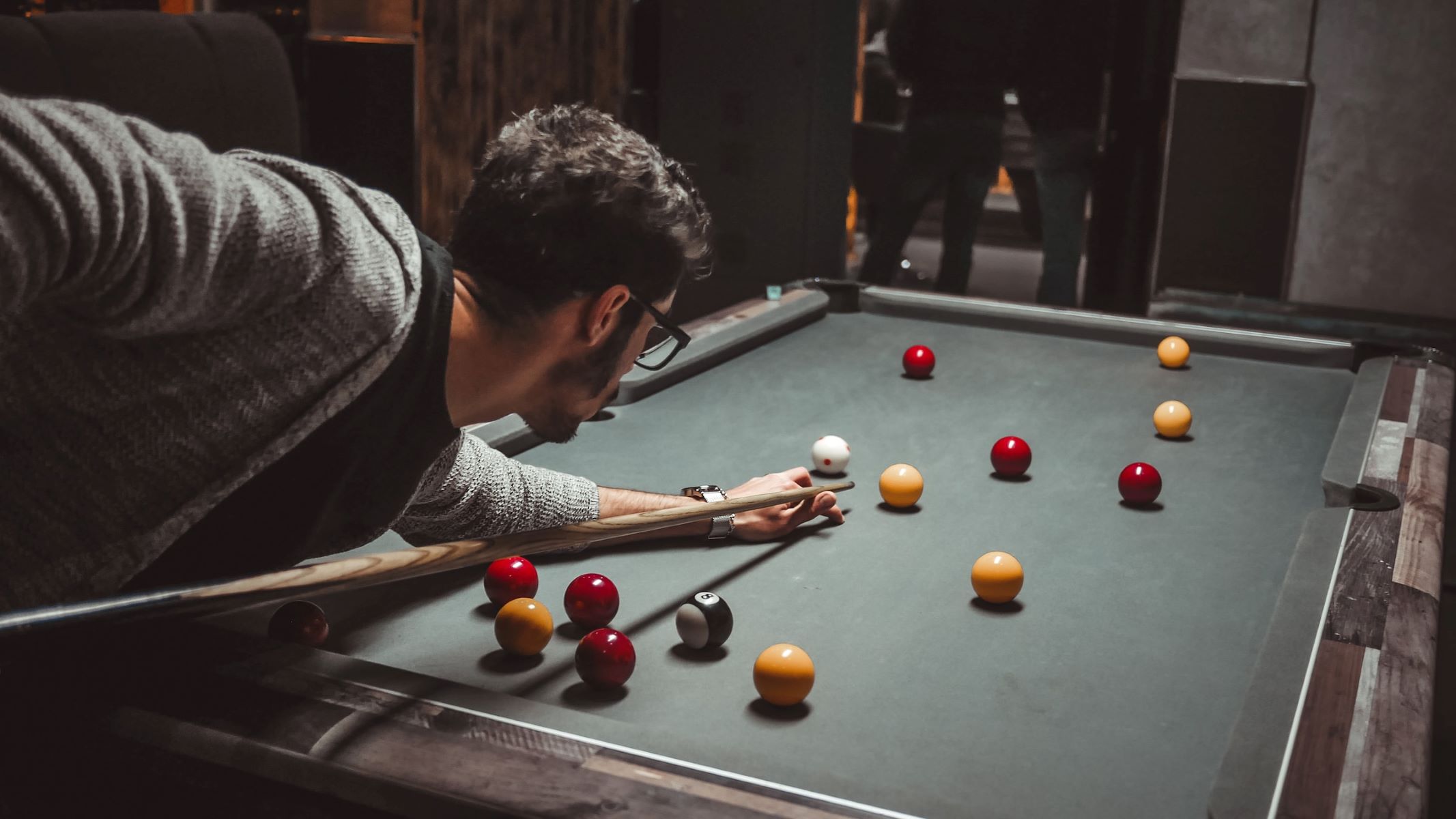
Pool tables, beyond being a staple in recreational spaces and bars, are a symbol of camaraderie, competition, and skill. Whether you’re a professional aiming for the perfect break shot or an enthusiast planning to set up a game room in your home, understanding pool table sizes is crucial. Why, you ask? The dimensions of a pool table influence not just the gameplay but also determine the kind of space you’d need to house one. Furthermore, different events and competitions have varied standards, making the choice of pool table size pivotal for players. In this article, we’ll delve deep into the world of pool table sizes and dimensions, ensuring that by the end, you’ll be equipped with the knowledge to make informed decisions, whether you’re buying, setting up, or just indulging your curiosity.
History and Background
The game of pool, often confused with billiards, has a rich history dating back centuries. As the game evolved, so too did the tables on which it was played. The pool table’s journey from its early incarnations to today’s modern designs is both fascinating and enlightening.
In the 15th century, pool began as an outdoor lawn game in Europe, bearing a close resemblance to croquet. It was then moved indoors, and green cloth was used on tables to simulate the grass – a tradition that continues to this day. As the game transitioned indoors, it demanded a standardization of equipment, including the table sizes.
Originally, pool tables were made of flat stones and clay. It was only in the 18th and 19th centuries that wooden tables with slate beds, as we know them today, became popular. The pool table dimensions, initially, were not standardized and varied across regions, establishments, and manufacturers.
The late 19th and early 20th centuries saw a boom in pool halls, and with it came the need for a more unified approach to table dimensions, especially as the sport grew in popularity and competitions became more widespread. Associations and governing bodies started to define standard sizes, especially for official tournaments.
While the standard 9-foot table (known as the “tournament size”) became prevalent in professional settings, various other sizes like the 7-foot and 8-foot tables found their niche in bars, clubs, and private homes due to space constraints and varied gameplay preferences.
Today, while the essence of the game remains consistent, the pool table sizes and dimensions cater to a wide audience, from amateurs to professionals, each bringing its own set of challenges and advantages. This evolution not only traces the journey of a sport but also highlights how equipment can shape and be shaped by the culture and demands of its time.
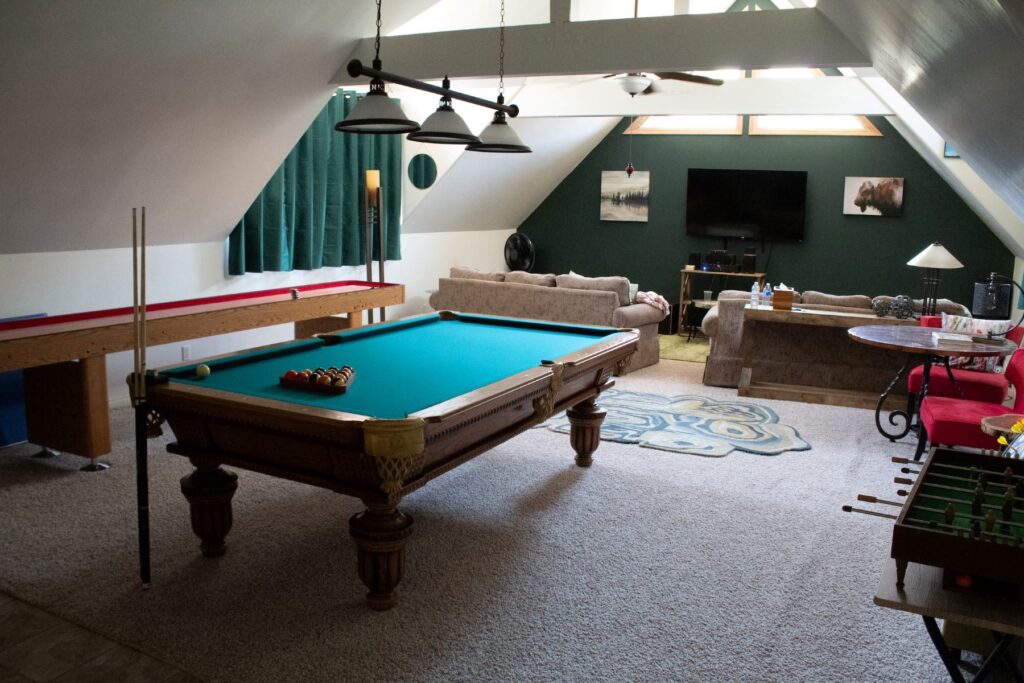
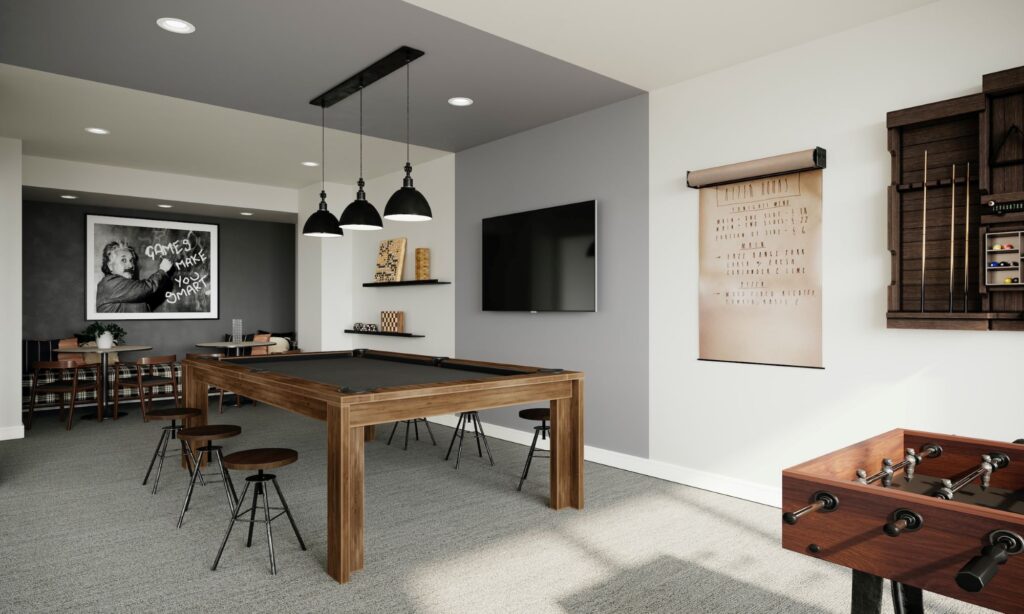
Pool Table Sizes
Understanding pool table sizes is paramount, not only for potential buyers but also for enthusiasts and players. The size of a pool table directly impacts the style of play, the level of challenge, and the space requirements. Here’s a breakdown of the standard and other popular sizes available in the market:
Mini Pool Table (4-foot and less):
- Dimensions: Typically, mini tables range from 20 inches to 4 feet in length.
- Playing Surface Area: Given the size, the playing area is significantly smaller, providing a unique challenge.
- Common Uses: Mini tables are perfect for children and for those who have very limited space. They are also great for casual play, and some players even use them to sharpen their precision and focus.
Small Pool Table (5 to 6-foot):
- Dimensions: These tables range from 5 to 6 feet in length.
- Playing Surface Area: They offer a middle ground between mini tables and full-sized ones. While the surface is larger than mini tables, it’s still compact enough to fit in many homes.
- Common Uses: They’re ideal for teenagers, beginners, or for recreational spaces that cannot accommodate larger tables. Their size also makes them a popular choice for some commercial establishments looking to optimize space.
6-foot pool tables:
- Dimensions: As the name suggests, these tables are 6 feet in length.
- Playing Surface Area: It provides a more spacious play area compared to the smaller versions but still requires players to adapt their game slightly from the larger, standard tables.
- Common Uses: 6-foot tables are suitable for both homes and commercial establishments. They provide a good balance between playability and space-saving.
7-foot pool tables (Bar Box):
- Dimensions: These are 7 feet in length.
- Playing Surface Area: Offers a decent-sized playing field, slightly smaller than the professional standards.
- Common Uses: Often found in bars and pubs, hence the name “Bar Box.” They are also a popular choice for homes with medium-sized game rooms.
8-foot tables (Standard):
- Dimensions: These tables span 8 feet in length.
- Playing Surface Area: Almost as large as the tournament standard, providing a close-to-professional experience.
- Common Uses: Widely used in homes and commercial spaces alike. This size is often the preferred choice for those seeking a balance between professional gameplay and space considerations.
9-foot pool tables (Tournament Size):
- Dimensions: These are 9 feet in length, the largest among standard sizes.
- Playing Surface Area: Offers the largest standardized playing field, presenting the challenges and space that professionals are accustomed to.
- Common Uses: Predominantly found in pool halls and professional tournaments. Also, in homes of dedicated enthusiasts who have ample space and a passion for the game.
Other Sizes:
- 10-foot and snooker tables: While not as common as the other sizes, they cater to specific audiences and types of billiard games.
- Non-standard or custom sizes: For those with unique requirements, some manufacturers offer custom table sizes.
Different pool table dimensions introduce varied gameplay dynamics, challenging players in unique ways. Whether you’re a seasoned professional or someone just stepping into the world of pool, there’s a pool table size tailored to your needs and preferences.
Key Pool Table Dimensions Explained
When discussing pool tables, we often toss around terms like “7-foot” or “9-foot”, but what do these measurements truly represent? And what other sizes play a role in the game’s experience? Delving into the specifics, it becomes clear that understanding these pool table dimensions can make a world of difference in how one engages with the sport.
Table Length and Width: Typically, when we refer to a table as being “7-foot” or “9-foot”, we’re speaking about the length of the table from one end to the other. However, the width is also crucial, as pool tables maintain a consistent length-to-width ratio, generally 2:1. This means a 9-foot table would be 9 feet in length and 4.5 feet in width. The ratio ensures consistent angles and strategies across different table sizes. It’s this consistency that allows players to adapt to varying pool table sizes with relative ease.
Playing Surface Area: This refers to the actual playable area inside the cushion boundaries. It’s slightly smaller than the overall table’s measurement due to the width of the cushions around the playing surface. A larger playing surface demands more precision and can alter the speed of play. Knowledge of the playing surface area is also crucial when considering the type and size of felt to purchase for re-covering.
Rail and Cushion Dimensions:
- Rail Width: The width of the rails can vary among tables. Wider rails can reduce the playing surface area, even if the outer dimensions of the table remain constant. The width also affects the bounce of the ball off the cushion.
- Cushion Type: Cushions, made from synthetic materials or natural rubber, determine the ball’s rebound. The profile and material of the cushion can significantly influence gameplay. Quality cushions provide consistent and predictable bounces.
Pocket Size and Cut:
- Pocket Size: Pockets can vary in size. Tournament tables often have tighter pockets to increase the game’s challenge, while recreational tables might have slightly larger pockets to make potting balls more forgiving.
- Pocket Cut: The shape or “cut” of a pocket, especially the corners, can impact how accepting it is of a shot. Some tables have pockets with sharp angles, while others have a more rounded cut.
Table Height and Leg Dimensions:
- Standard Height: Most pool tables have a standard height ranging from 29 to 32 inches from the floor to the playing surface. This height ensures a comfortable playing stance for most individuals.
- Leg Style and Stability: The design of the table’s legs affects not only the table’s aesthetic but also its stability. Heavy, well-constructed legs can support the weight of the slate and ensure the table remains stable during play.
- Leveling: Many tables come with adjustable feet or leveling systems. A perfectly level table is paramount for fair and consistent gameplay.
Table Weight and Build Quality:
- Slate Thickness: The slate, which forms the playing surface, can vary in thickness, with three-quarters of an inch to one inch being common. A thicker slate usually indicates better quality and provides a smoother playing experience.
- Table Weight: Pool tables, especially those with thicker slates and sturdy construction, can be quite heavy. Knowing the table’s weight can be essential for installation, moving, and ensuring the floor can support it.
Space Needed for Cueing (Cue Stick Length Consideration): Beyond the table’s measurements, one must consider the space required to comfortably wield a cue stick around the entire table. A standard cue stick is about 57-58 inches long, so an additional 5 feet or so on each side of the table is advisable for unobstructed play. Adequate space ensures players can execute all types of shots without hindrance. Restricted cueing space can limit shot options and hinder a player’s form, affecting overall performance.
Accessory Storage: Some pool tables come with drawers or shelves built into the design, allowing for convenient storage of cues, balls, and other accessories. This feature can be particularly handy in compact spaces.
While the pool table size is a critical factor, the nuanced dimensions and features play a substantial role in the user’s experience. Whether you’re a seasoned pro or a recreational player, understanding these aspects ensures you choose a table that aligns with your expectations and enhances your enjoyment of the game.
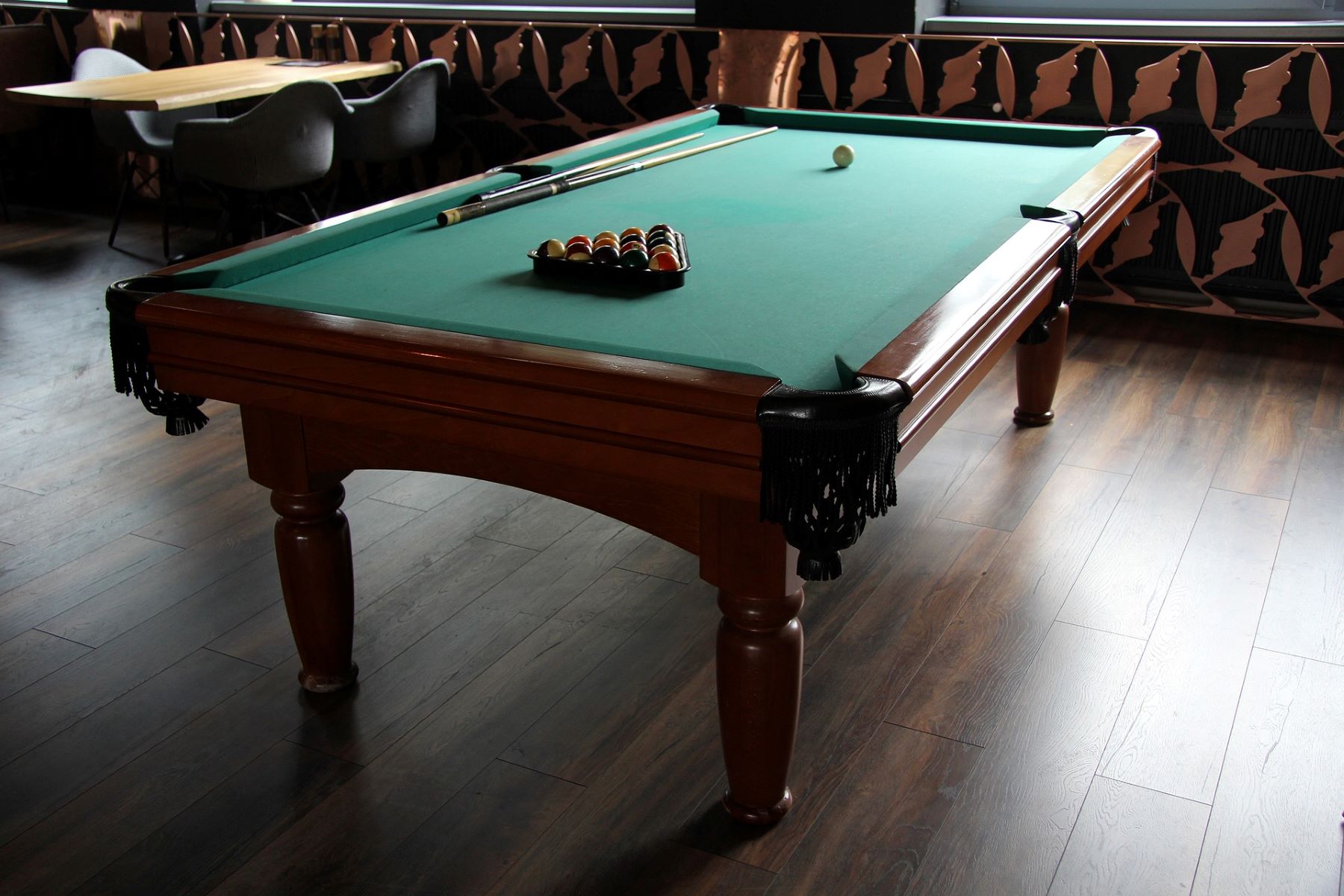
Benefits of Each Size
A pool table is more than just a piece of recreational equipment; it’s an investment in entertainment, skill development, and often, interior aesthetics. However, with the plethora of pool table sizes available, how do you choose? While each size caters to a different crowd and environment, they all offer distinct benefits. Let’s explore these advantages to help guide your decision:
Mini Pool Table (4-foot and less):
- Advantage in Space: Perfect for areas with significant space constraints. Its compact nature allows it to fit almost anywhere.
- Kid-Friendly: Ideal for introducing children to the game. Its size is proportionate to their stature, making it more accessible and engaging for them.
- Cost-Effective: Typically, these are more affordable than larger tables, making them a low-risk introduction to the game.
Small Pool Table (between 4 to 6-foot):
- Compact Yet Realistic: While still compact, these tables offer a more genuine pool-playing experience than mini versions.
- Versatility: Suitable for both young players transitioning from mini tables and adults looking for a casual game in constrained spaces.
- Ease of Movement: Often lightweight, they can be moved more easily, making them suitable for multipurpose rooms.
Recreation (6-foot):
- Balanced Gameplay: Provides a midpoint experience between small tables and professional sizes, offering a genuine feel of the game without the demanding precision of larger tables.
- Residential Appeal: Fits comfortably in many residential game rooms without overwhelming the space.
- Skill Development: Excellent for beginners and intermediate players to hone their skills before transitioning to larger tables.
Bar size (7-foot):
- Social Catalyst: Often found in social settings like pubs, it’s perfect for casual, fun-filled games among friends.
- Learning Curve: Ideal for amateur players, as the smaller size can be forgiving, allowing players to build confidence.
- Space Savvy: Slightly larger than the recreation size but still compact enough for most homes and commercial establishments.
Standard (8-foot):
- Best of Both Worlds: Offers a near-professional experience without the daunting size, bridging the gap between casual and serious play.
- Decor Appeal: Often designed with aesthetics in mind, they can serve as beautiful centerpieces in game rooms.
- Skill Enhancement: Suitable for players who’ve surpassed beginner levels and are looking to challenge themselves further.
Tournament size (9-foot):
- Professional Standard: Recognized globally for tournaments, it provides the most authentic and challenging pool experience.
- Skill Mastery: Ideal for those serious about the game, seeking to refine their skills to professional standards.
- Statement Piece: Its impressive size can dominate a room, making it a striking addition to dedicated game spaces.
Each pool table size, while serving the fundamental purpose of the game, offers its own unique experience. Your choice will depend on your objectives – be it casual recreation, serious gameplay, skill development, or even just an aesthetic addition to your space.
Factors to Consider When Selecting a Pool Table Size
Selecting the right pool table size is more than just a matter of personal preference. Several factors play a role in the decision, ensuring you get the best experience in the space you have, matching your skill level, and aligning with your goals. Here are some key considerations to keep in mind when choosing a pool table size:
Room Size and Space Requirements:
- Space Around the Table: It’s not just the table size you have to consider, but also the space you’ll need around it. Players require ample room to maneuver their cues without restrictions. Typically, a clearance of at least 5 feet on all sides of the table is recommended for a comfortable playing experience.
- Room Size Charts: There are charts available by specific manufacturers that provide guidance on room dimensions needed for different table sizes. Consulting these can prevent the disappointment of a table that feels cramped in its space.
Player Skill Level:
- Beginners: If you’re new to the game, starting with a smaller table can help in honing basic skills. The shorter distances can make the game more accessible and enjoyable.
- Intermediate to Advanced Players: Larger tables, like the 8-foot or 9-foot versions, can provide the challenges necessary for skill enhancement. The wider playing surface and longer shots can better prepare players for professional gameplay.
- Recreational Players: If you’re playing for fun and not necessarily to improve your game, then a 7-foot or even a 6-foot table might be ideal. It provides a balance of challenge and enjoyment.
Purpose of the Table:
- Home Use: For most homes, space is a limiting factor. While a 9-foot table might be desirable for gameplay, it might not be practical. It’s essential to balance your love for the game with the realities of your living space.
- Business Use: Bars, pubs, and recreational centers might opt for 7-foot tables due to their popularity and space-saving nature. Pool halls, on the other hand, may lean towards the professional 9-foot tables to attract serious players.
- Training and Professional Play: If the primary purpose is training for tournaments or professional play, then a 9-foot table is almost a must. It ensures you practice under conditions similar to actual competitions.
Aesthetic and Room Design:
- Complementing Decor: The table should complement the room’s aesthetic. A large table in a small room might look out of place, while a mini table in a vast hall can seem lost.
- Functionality vs. Design: Some might prioritize the design and look of a room over the table’s functionality. In such cases, even if space allows for a bigger table, a smaller or more decorative one might be chosen for its aesthetic appeal.
While the pool table dimensions are undoubtedly vital, they should be viewed in context. Consider the surrounding space, the players’ needs, and the intended purpose of the table. By weighing these factors, you’ll be better equipped to make a choice that ensures satisfaction for years to come.
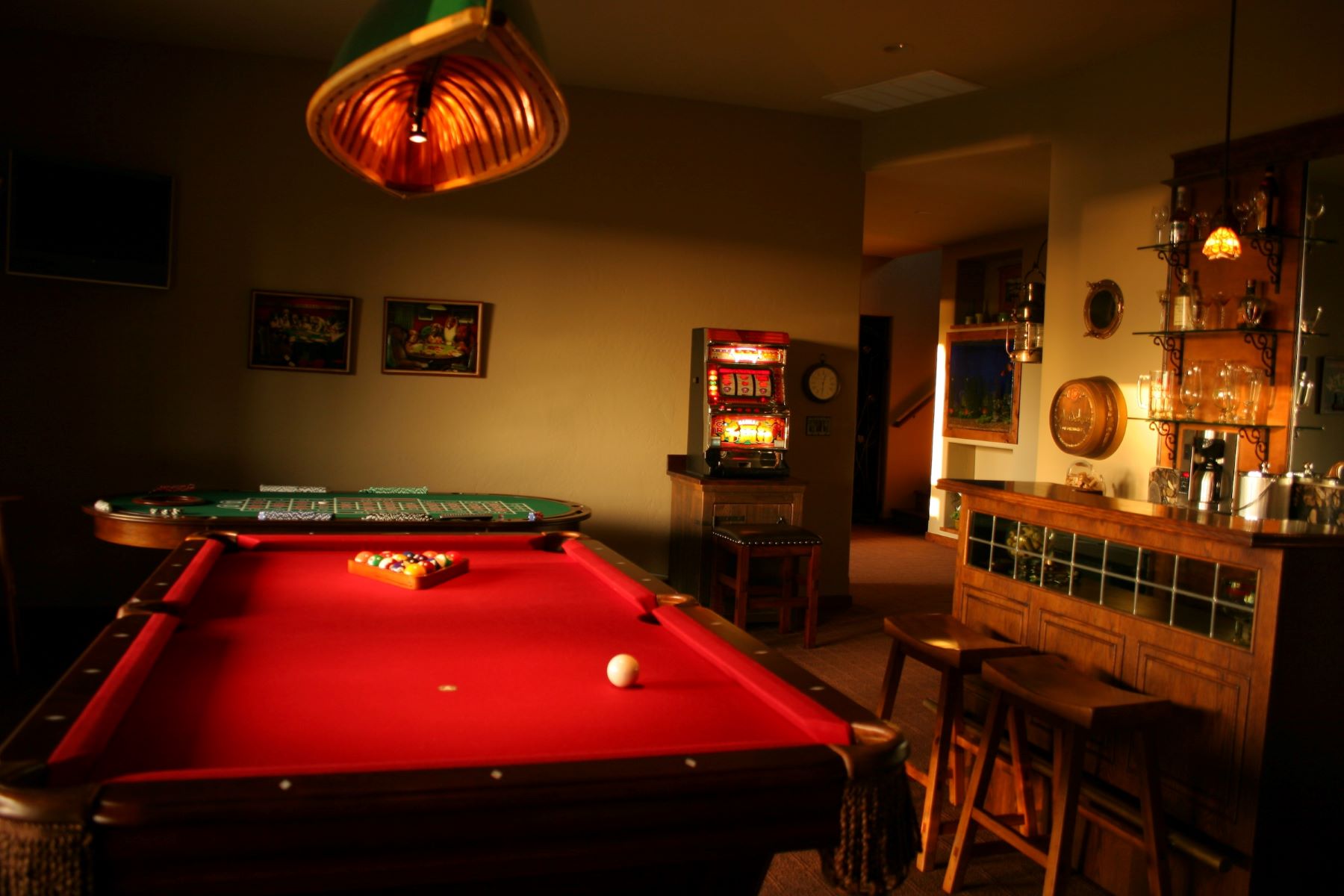
Factors Affecting Play on Different-Sized Tables
The size of a pool table has a profound impact on the gameplay experience. While the foundational rules and objectives of the game remain consistent, the intricacies and strategies can differ considerably based on pool table sizes. Let’s delve into how different-sized tables can shape the dynamics of play:
- Ball Travel and Speed: On larger tables, balls have more ground to cover, demanding players to use more force for longer shots. This can affect both the strategy and physical aspects of the game. Players might need a more powerful stroke on a 9-foot table compared to a 6-foot one. The ball’s speed and direction become more crucial on expansive surfaces.
- Precision and Accuracy: Smaller tables, due to their condensed space, might seem easier, but they often require increased precision as the balls are closer together. On smaller tables, players often have to navigate tighter clusters of balls, making shot selection and cue ball control paramount.
- Bank and Kick Shots: The table’s size can affect the angles and strategies behind bank shots (where the object ball rebounds off a cushion before pocketing) and kick shots (where the cue ball rebounds off a cushion before hitting the object ball). Larger tables can provide more opportunities for these types of shots but also require a better understanding of angles and ball behaviors.
- Break Strategy: The initial break in pool, where the player strikes the rack to scatter the balls, can play out differently depending on the table size. On larger tables, achieving a solid spread of the balls post-break might require more power. On smaller tables, controlling the cue ball becomes vital to avoid inadvertent pocketing or fouls.
- Safety Plays: Safety plays, where a player deliberately ensures that their opponent doesn’t have a clear shot, can be executed differently across table sizes. On larger tables, players might have more areas to hide the cue ball, but on smaller tables, the intricacies lie in using other balls as effective blockades.
- Learning Curve: The challenge and pace of learning can vary based on the table size. Beginners might find smaller tables less intimidating and more forgiving, allowing them to grasp the basics faster. In contrast, larger tables can provide a steeper, yet more comprehensive learning experience.
While the heart of the game remains consistent, the rhythm, strategy, and challenges evolve with the pool table size. Recognizing these nuances ensures players can adapt and refine their skills across diverse playing environments, enriching their overall pool journey.
Custom Pool Table Sizes
While standard pool table sizes cater to a broad audience, there’s a unique allure in possessing something tailored just for you. Custom-sized pool tables have carved their niche in the billiards world, allowing aficionados and enthusiasts alike to blend their passion for the game with personal aesthetics, constraints, or desires. Let’s delve into the world of custom pool tables:
Why Opt for Custom Sizes?
- Unique Spaces: Not every home or commercial space adheres to standard sizes. Custom-sized pool tables can fit seamlessly into atypical rooms or areas with distinct spatial constraints.
- Personal Touch: There’s a certain pride in owning something unique. Whether it’s a size that reflects personal playing preferences or an unusual size that sparks conversation, customization allows individual expression.
- Special Requirements: Advanced players might have specific needs not met by conventional sizes. Custom tables can cater to these niche requirements, elevating the gameplay experience.
Designing Your Custom Pool Table:
- Size: While the standard length-to-width ratio is 2:1, custom tables can deviate to suit personal preferences or room sizes. However, maintaining some proportionality can ensure a balanced playing experience.
- Materials: Beyond size, customization can extend to the choice of wood, finish, pocket style, and even the table’s legs. This ensures the table not only fits its intended space but also resonates with the owner’s aesthetic sensibilities.
- Felt and Color: The table’s felt can be tailored in color and material type, further enhancing its bespoke nature.
Considerations for Custom Sizes:
- Pricing: Customization typically comes at a premium price. It’s essential to balance desires with budget constraints.
- Resale Value: While a custom table is a cherished possession for its original owner, it might not hold the same value in the resale market due to its unique size or design.
- Gameplay Adjustments: Deviating significantly from standard sizes can alter gameplay dynamics. It’s crucial to be cognizant of how changes might affect the playing experience.
Maintenance and Care:
- Specialized Care: Given their unique nature, custom tables might demand specific maintenance routines, especially if they incorporate unconventional materials or designs.
- Replacement Parts: Custom tables might require specially ordered replacement parts, like cushions or pockets. It’s wise to keep this in mind when opting for a bespoke design.
In the world of billiards, custom-sized pool tables stand out as individual threads, each narrating a unique story of passion, style, and individuality. While they might not be for everyone, for those who tread this path, the reward is a piece of art that offers both personal and play value.
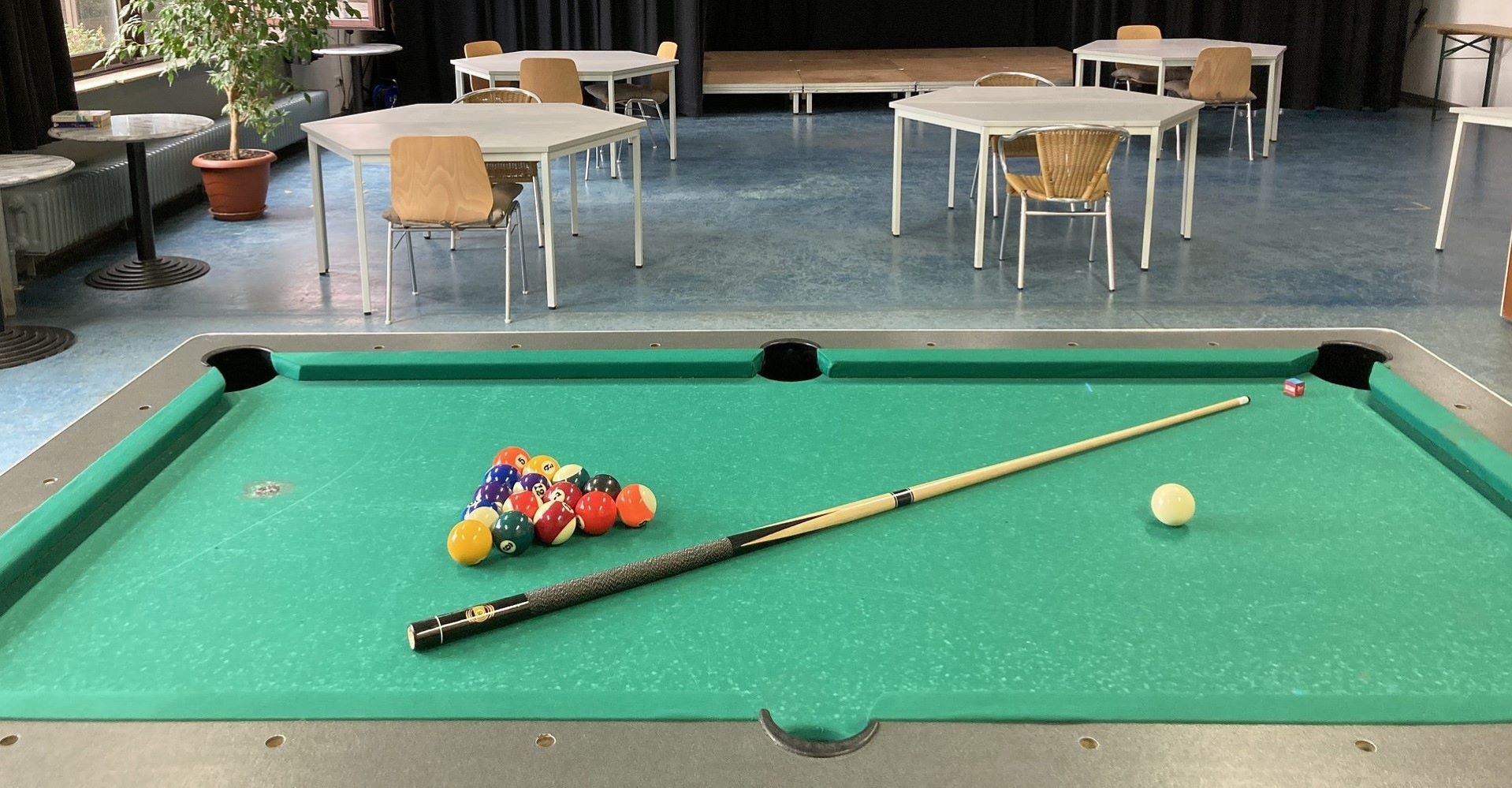
Conclusion
The world of pool tables, with its diverse sizes and dimensions, is as varied as the players who enjoy the game. From the compact mini tables suitable for a casual game in a small room to the professional 9-foot tables that challenge even seasoned players, there’s a pool table for every space and skill level.
Understanding the intricacies of pool table sizes and dimensions is not just about facts and measurements. It’s about finding the perfect fit for your space, your gameplay aspirations, and your aesthetic preferences. The right table can offer years, if not decades, of enjoyment, making every game a cherished memory.
Whether you’re an amateur looking to start a new hobby, a business owner aiming to entertain patrons, or a professional training for the next big championship, the journey begins with choosing the right table. And in this endeavor, knowledge is your best ally.
As you embark on this journey, remember that the table is not just a piece of furniture or sports equipment; it’s a centerpiece that can bring people together, spark friendly competitions, and create lasting memories. Choose wisely, play passionately, and let the game of pool add a new dimension to your life.
Frequently Asked Questions (FAQ)
Over the years, certain questions about pool table sizes and dimensions seem to come up time and time again. Here, we address some of the most frequently asked questions:
What is the regulation size for a pool table?
Regulation size refers to the standard used in professional tournaments and is typically 9 feet (length) by 4.5 feet (width). However, the term “regulation” can be misleading as many casual players and pubs use 7-foot or 8-foot tables.
How much space do I need around a pool table?
A general rule of thumb is to have at least 5 feet of clear space on all sides of the table. This allows players ample room to take shots without obstructions. For example, for a 7-foot table, a room size of 17 feet by 14 feet is recommended.
Can I place a pool table on the second floor of my house?
Yes, most residential floors can support the weight of a pool table. However, it’s essential to consider the table’s weight, especially if it’s a slate one, and check the floor’s load-bearing capacity. If you are unsure, it is advisable to seek the opinion of a structural engineer.
What’s the difference between pool and billiards?
While both terms are sometimes used interchangeably, they traditionally refer to different games. “Pool” usually pertains to games like 8-ball and 9-ball, played on a rectangular table with six pockets. “Billiards” often refers to games played on a pocketless table, such as three-cushion billiards.
Does the felt color on a pool table affect gameplay?
While the felt’s texture and quality can influence gameplay, the color mainly affects visibility. Green and blue are traditional colors that reduce strain on the eyes, but other colors can be used for aesthetic preferences without impacting the game’s mechanics.
Are slate pool tables better than non-slate ones?
Slate tables offer a smoother and more consistent playing surface, making them preferred by professionals and serious enthusiasts. Non-slate tables, usually more affordable, are suitable for casual play but might not provide the same precision as slate tables.
How often should I change the felt on my pool table?
For home tables that see moderate use, changing the felt every 2-5 years is sufficient. For tables in venues or those used heavily, the felt might need replacement every year.
Remember, the world of pool and billiards is vast, and these are just a few questions that scratch the surface. Whether you’re a newbie or a seasoned player, there’s always something new to learn and discover in this timeless game.